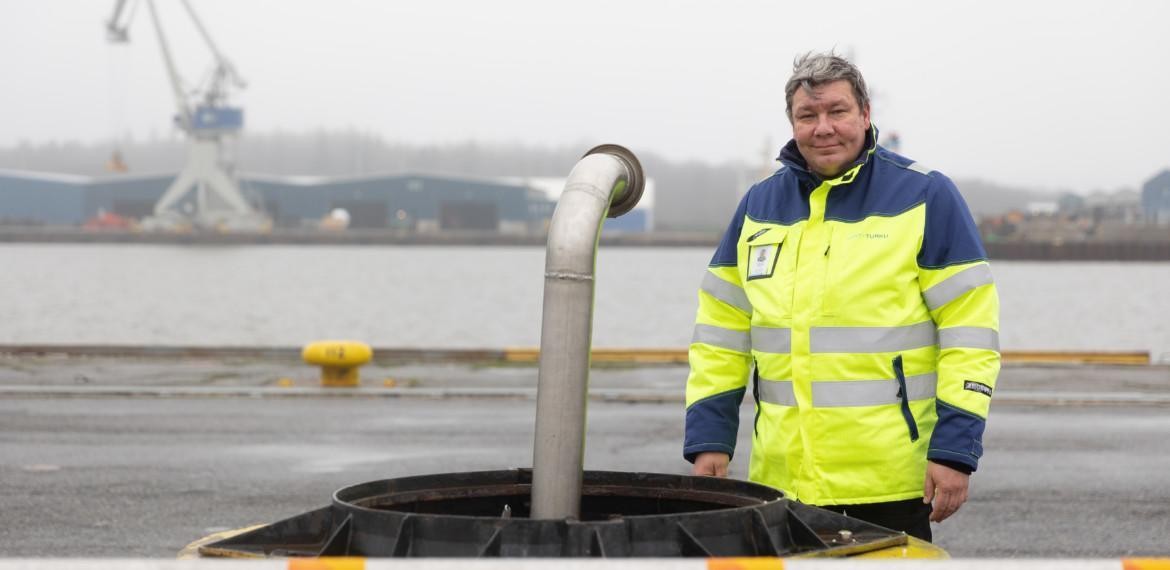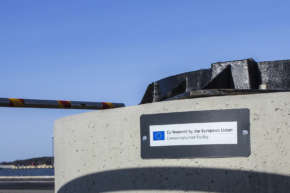For a cleaner Baltic Sea
Turku is well prepared for emptying the wastewater from ships. Meriaura has made the decision to discharge the septic tanks in the port whenever possible.

According to Harbour Master Teemu Aaltonen, there are two drainage wells in the Port of Turku to which wastewater, or septic waste, can be forwarded directly from the ship.
Smaller ships can also utilise a tank truck that takes the wastewater from the quays to drainage well located a little farther away.
“In both cases, the septic waste ends up in the City of Turku’s sewer and cleaning system.”
There is no separate charge for the service to the shipping companies, but it is included in the port charge.
“We want to contribute to taking responsibility for the state of the Baltic Sea and also help our customers to act in an environmentally sound manner.”
According to regulations, unprocessed wastewater from ships may be discharged to the sea, if the distance to the shore is at least twelve nautical miles; the required distance for processed wastewater is three nautical miles. The speed of the ship shall be at least four knots.
Ships have their own purification systems which do not, however, remove from the wastewater the nutrients that cause eutrophication.
A cruise liner may carry 200 cubic metres of wastewater
The importance of septic system services is emphasised in the case of large ships in particular.
 “According to the current information, at least ten large cruise liners will call in Turku in 2022. One cruise liner may carry up to 100–200 cubic metres of wastewater”; Mr Aaltonen calculates.
“According to the current information, at least ten large cruise liners will call in Turku in 2022. One cruise liner may carry up to 100–200 cubic metres of wastewater”; Mr Aaltonen calculates.
He points out that in addition to the Port of Turku’s capacity, the ferries sailing between Finland and Sweden have their own wastewater systems which are maintained by Viking Line and Tallink Silja by themselves.
“Today, cargo ships also use our septic system services to a commendable degree”, he adds.
Meriaura sets an example
Shipping company Meriaura has made a decision of principle to empty their septic tanks in the port whenever possible.
“We are concerned about the state of the sea and environment. We want to set an example to other shipping companies, too”, says Mia Hytti, Sustainability Specialist at Meriaura.
She tells that the solution being used in Turku and e.g. in Helsinki which allows for discharging septic tanks directly into the sewer system is luxurious for the shipping company.
“Ships only stay in the port for a short time nowadays. As the wastewater can be discharged from the ship directly into the sewer system, there is no need to wait for tank trucks. Hopefully, similar services will become common in other ports, too.”
Room for improvement in the south
The situation is completely different e.g. in southern Europe: emptying the septic tank in the port may be very difficult.
“The port authorities in southern Europe do not necessarily even understand what we want. The processing of septic waste may also be very expensive.”
Ms Hytti contemplates that the seafaring industry is conservative and things are often done the way they have always been done. It is not always a question of attitudes, however.
“In older ships in particular the septic tanks may be so small and fill up so quickly that sometimes they have to be discharged at sea. The modification of old ships is expensive. Hence it would be extremely important that the septic tanks could be discharged in every port.”
Text: Matti Välimäki
Photos: Ilari Välimäki and Meriaura/Esko Pettay



